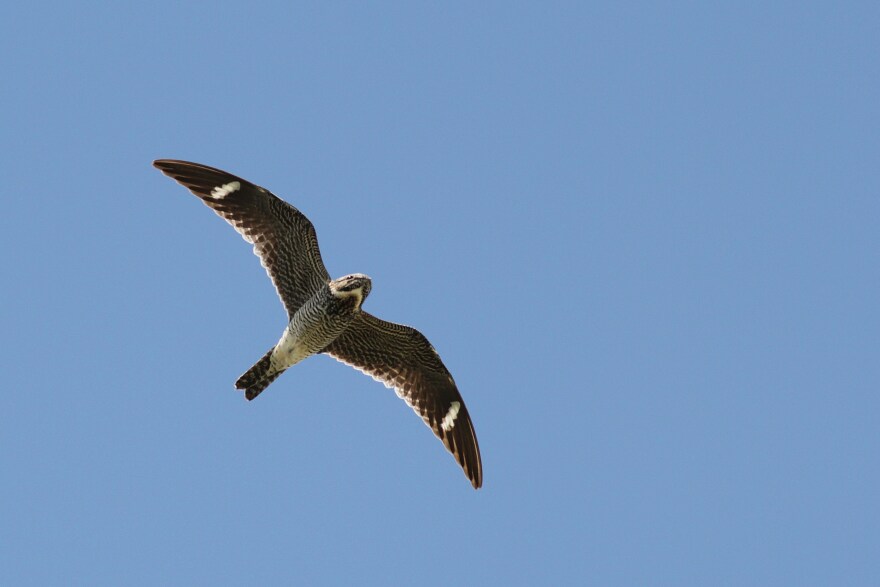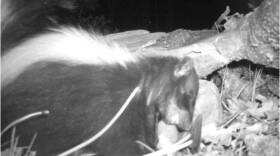If you see a bat-like bird with long, narrow wings zigzagging across the sky in early morning or evening twilight, it’s likely the common nighthawk. But in a small corner of northern Arizona, another nighthawk species is also found.
A folk name for nighthawks is bullbat, for the nocturnal mammals they can be mistaken for. But these members of the nightjar family appear far more graceful than bats as they capture insects in flight.
Male common nighthawks will dive at high speeds toward the ground to attract mates and keep out competitors. A booming sound results as the birds pull up just in time, with the wind rushing through their feathers—also explaining the name bullbat.
Nighthawks are strongly influenced by moonlight—foraging and emitting their sharp nasal calls more often under bright moonlit conditions. Their breeding may even be timed with the lunar calendar.
Common nighthawks are the species found across most of North America. In the lower deserts of the Southwest, they’re replaced by lesser nighthawks.
But, in the Little Colorado River valley, especially around Wupatki National Monument, both common and lesser nighthawks occur together. This overlap zone is poorly known and probably restricted to this small geographic area.
Markings on the wings can distinguish the two—lesser nighthawks have a white bar very close to their rounded wing tips, while on common nighthawks the white bars are much farther back from the end of longer, pointed wings.
Such range overlaps are natural “edges”—places of greater diversity. For reasons still unknown, among nighthawks that edge exists in our region.








